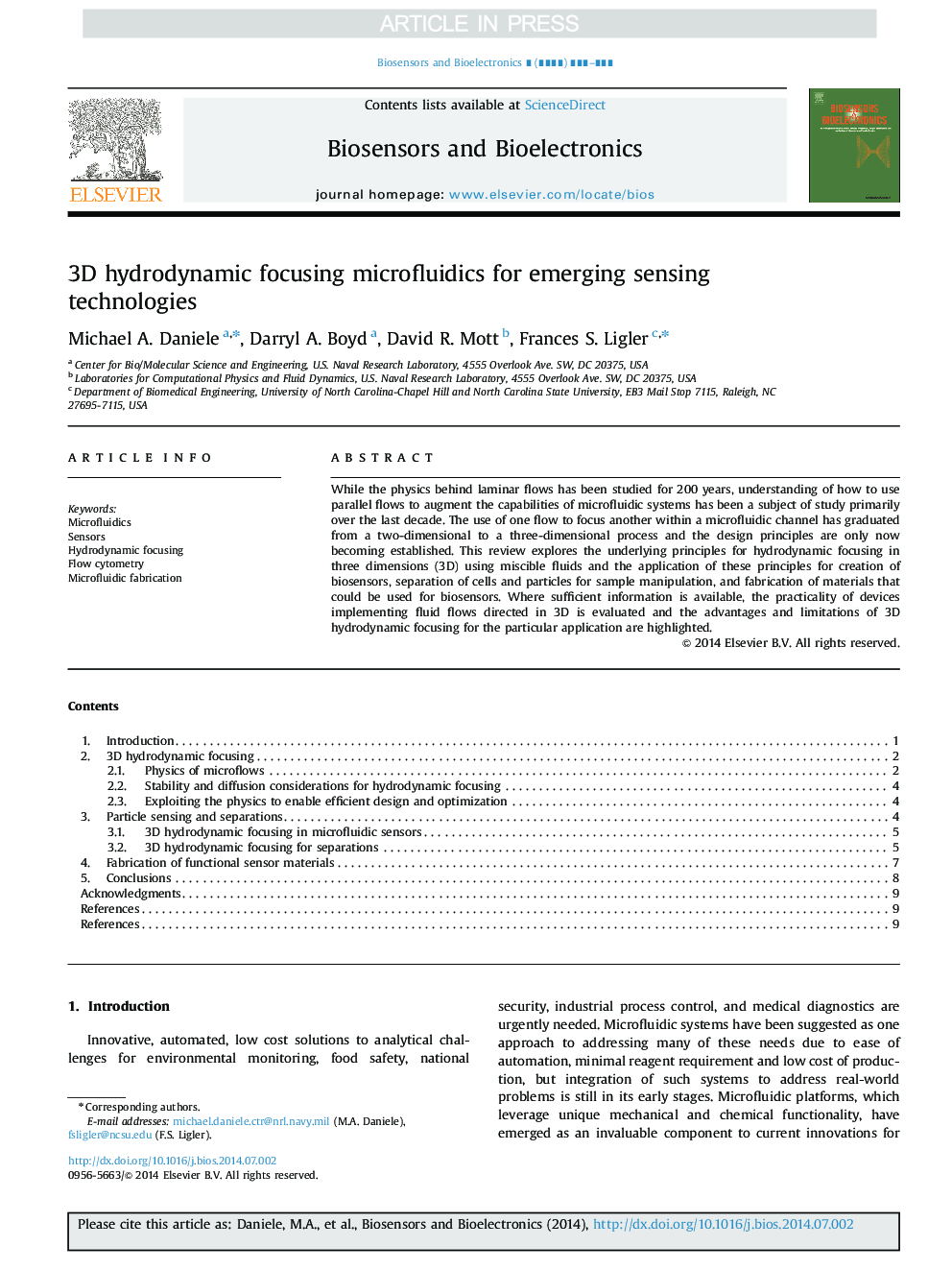| Article ID | Journal | Published Year | Pages | File Type |
|---|---|---|---|---|
| 7232293 | Biosensors and Bioelectronics | 2015 | 10 Pages |
Abstract
While the physics behind laminar flows has been studied for 200 years, understanding of how to use parallel flows to augment the capabilities of microfluidic systems has been a subject of study primarily over the last decade. The use of one flow to focus another within a microfluidic channel has graduated from a two-dimensional to a three-dimensional process and the design principles are only now becoming established. This review explores the underlying principles for hydrodynamic focusing in three dimensions (3D) using miscible fluids and the application of these principles for creation of biosensors, separation of cells and particles for sample manipulation, and fabrication of materials that could be used for biosensors. Where sufficient information is available, the practicality of devices implementing fluid flows directed in 3D is evaluated and the advantages and limitations of 3D hydrodynamic focusing for the particular application are highlighted.
Related Topics
Physical Sciences and Engineering
Chemistry
Analytical Chemistry
Authors
Michael A. Daniele, Darryl A. Boyd, David R. Mott, Frances S. Ligler,
